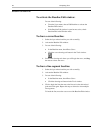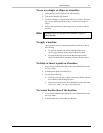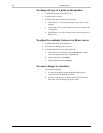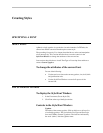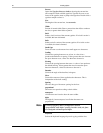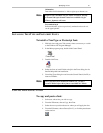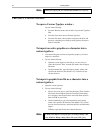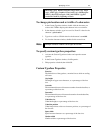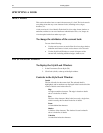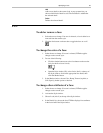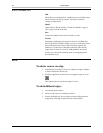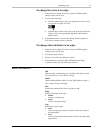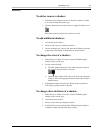
52 Creating Styles
FXDeko User’s Guide
Note
When you copy a font, it is saved in the Windows NT clipboard.
CREATING A CUSTOM TYPEFACE
To open a Custom Typeface window:
Do one of the following:
• From the Window menu, choose Select Layout, then Typeface
Edit.
• From the View menu, choose Custom Typeface.
• From the File menu, choose Open, navigate to the drive and
directory containing an existing custom typeface, then press
Enter or click OK.
To import an active graphic as a character into a
custom typeface:
1. Activate the Program window and open the graphic you wish to
import as a character.
2. Do one of the following:
• Open the custom typeface, and click or use arrow keys to
select the character. Then, from the File menu, choose Import
Character.
• On the command bar, type cface import [code], where code
specifies the character (the default is 97). Code=0 uses the
current selection.
To import a graphic from file as a character into a
custom typeface:
1. Open the custom typeface.
2. Do one of the following”
• Click or use arrow keys to select the character. Then, from the
File menu, choose Import Character From File. In the dialog
box, navigate to the file and enter it in the File Name text box,
then click OK or press Enter
• On the command bar, type cface importfile [code] [name],
where code specifies the character (the default is 97, code=0
uses the current selection), and name specifies the filename to
import.
FXDeko copies the file into the selected character.
Note
FXDeko can import several file types, including: Bitmap (.dib,
.rle), Windows Bitmap (.bmp), Photo CD (.pcd), PCX (.pcx),





